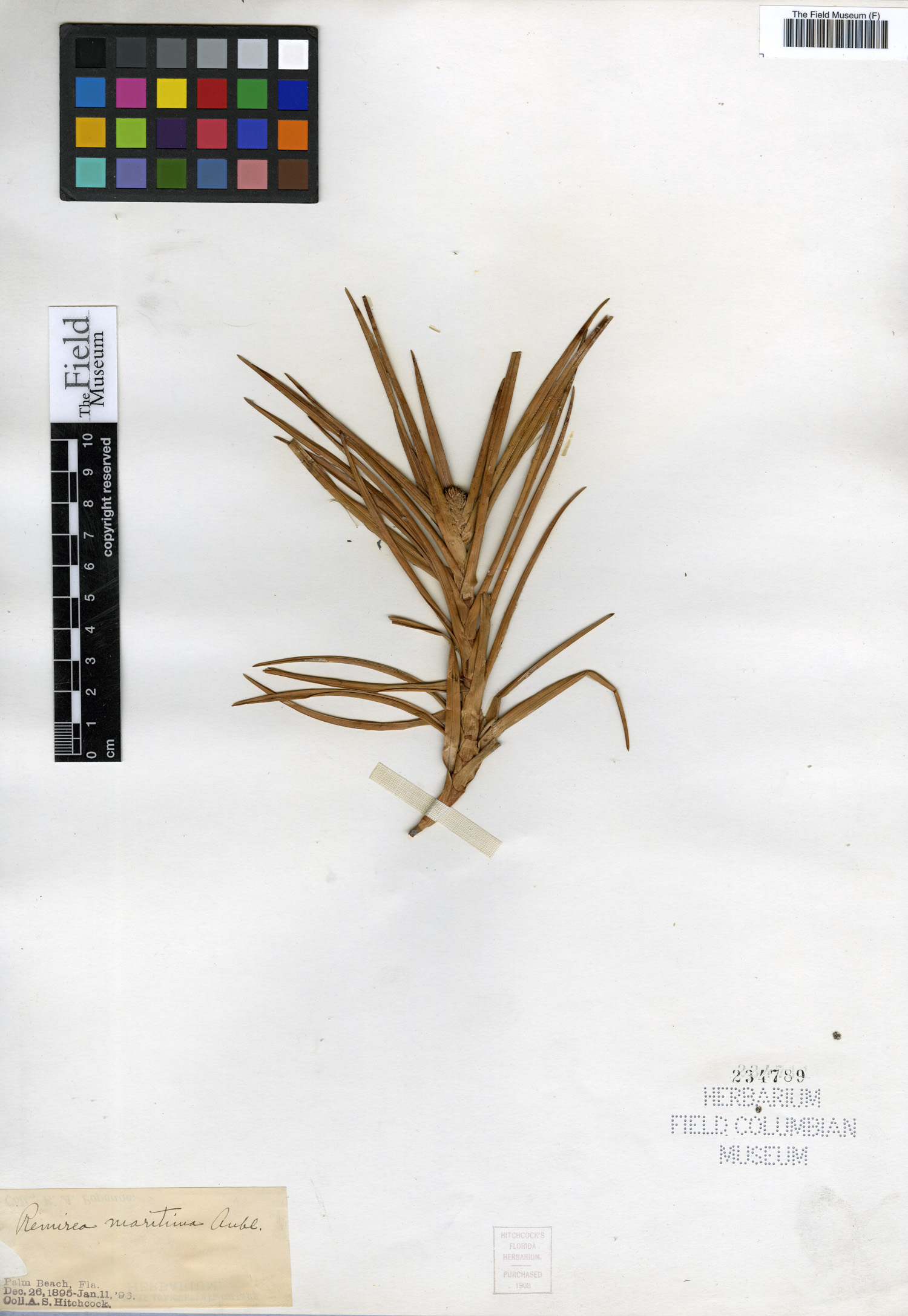Remirea
|
Family: Cyperaceae |
Herbs, perennial, not cespitose, rhizomatous. Culms solitary, trigonous, 12 cm or less, smooth. Leaves cauline; sheaths present; ligules absent; blades flat to V-shaped in cross section, prominently keeled on abaxial surface. Inflorescences terminal, capitate; spikes 1-6; spikelets 100+; involucral bracts 1-6, spreading to suberect, leaflike. Spikelets: subtending bract 1, prophyll 1, scales 2, proximal scale empty, other scale subtending flower. Flowers bisexual; perianth absent; stamens 3; styles terete, 3-fid, base persistent. Achenes rounded-trigonous. Remirea has been included in Cyperus (J. H. Kern 1974; G. C. Tucker 1987, among others). In cladistic analyses (J. J. Bruhl 1995), Remirea almost always appeared as the sister group to the African monotypic Sphaerocyperus Lye and was directly grouped with neither the subgenera of Cyperus nor the narrowly defined genera segregated from Cyperus. Remirea is distinctive in possessing, among other features, thick, corky fertile internodes at maturity (which may be mistaken for the achene), rachillas of definite growth, leaf vascular bundles in multiple rows, culm epidermal cells radially elongated in transverse section, terminal spikelets present, C4 photosynthetic pathway, two fertile floral bracts, inflorescence prophylls not pulvinate, culms with hypodermis, and floral bracts persistent (J. J. Bruhl and S. Perry 1995). The structure of chloroplasts in vascular bundles differs from other C4 genera of Cyperaceae (M. M. Estelita 1993).
|

